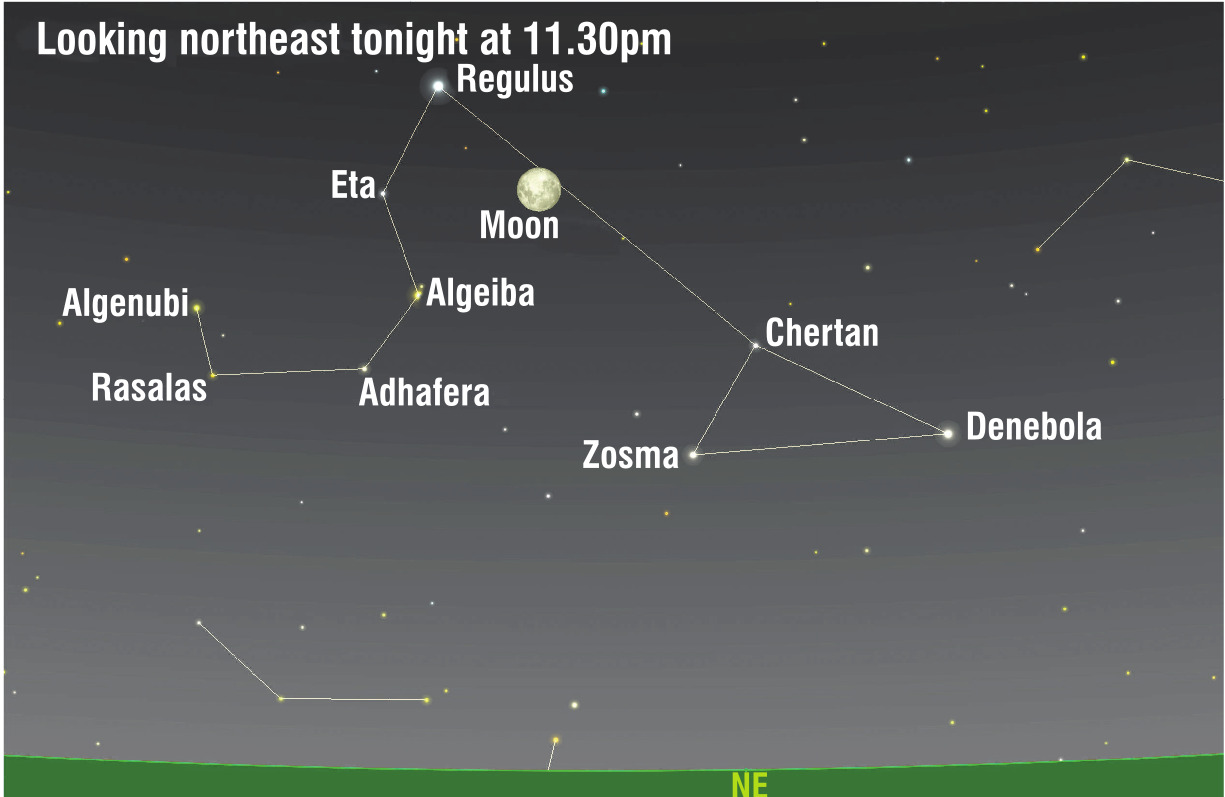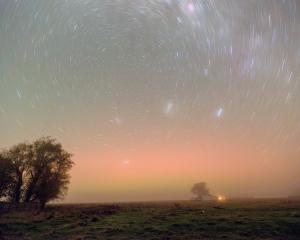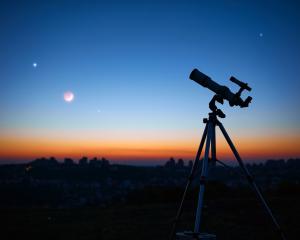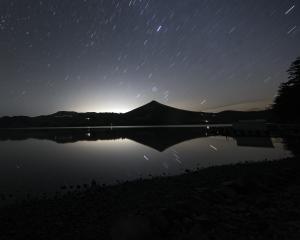
The moon also reaches apogee (its furthest point from Earth) on Monday afternoon, meaning this particular full moon is some 7% smaller and 15% dimmer than average. Despite this, light from Earth’s only natural satellite will still dominate the night this week.
February’s full moon is known as the worm moon in the northern hemisphere. This name comes from Native American culture, where indigenous people noticed worm trails on the ground which had thawed after the freezing winter. In the maramataka, the Māori lunar calendar, this is Huitanguru, the ninth month of the Māori year.

This evening, the moon will be below and to the left of Leo’s brightest star, which is known as Regulus. This blue-white star is just under 80 light years from Earth, which means the light you see from the star began its journey to your eyes in 1944.
If you have access to a telescope, it is definitely worth pointing it towards Leo’s third-brightest star, Algieba. Named after the Arabic word meaning "forehea", this star is one of the most stunning double stars in the sky. Even small telescopes can reveal its beauty.
The two stars in the system have strikingly different colours, with one being orange-red and the other appearing greenish-yellow to the naked eye. It takes the pair of stars over 500 years to complete an orbit around their centre of mass.











